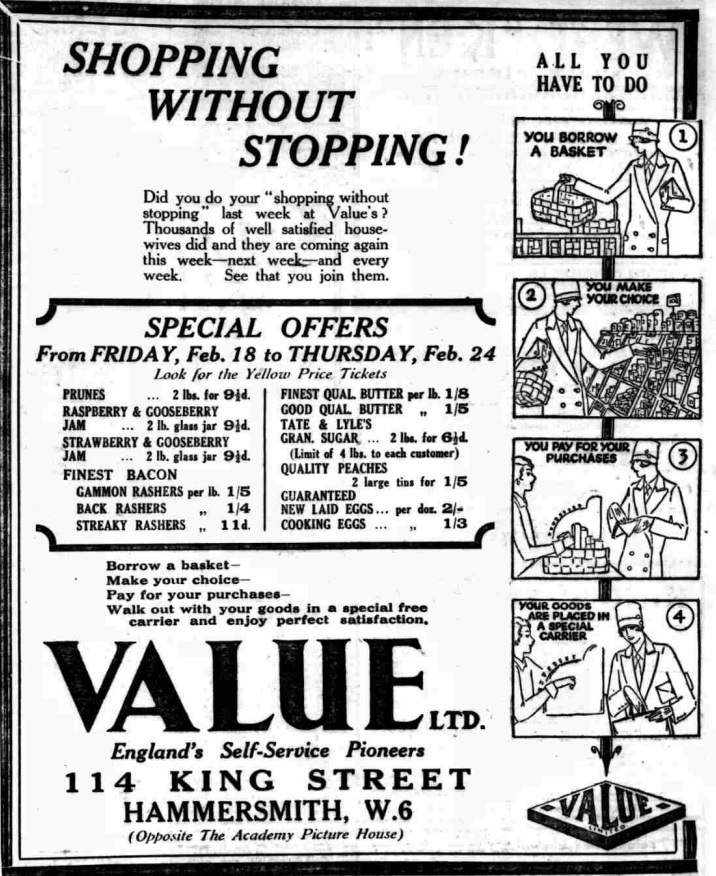
The co-operative movement is considered the pioneer of self-service shopping in the UK. It opened its first self-service section in Romford in 1942 and its first fully self-service store in Upton Park in 1948.
My recently published article, ‘The great new shopping idea: introducing self-service in the British Isles’ (link below), reveals that self-service existed before 1939. Indeed, self-service was gaining momentum in the years 1938-39. Had it not been for the outbreak of war, it would probably have been widespread by the early 1940s.
Self-service shopping was preceded by, and informed by, cafeterias. The first significant self-service cafeteria in the UK opened in Ponting’s department store in London in 1926. Others followed Ponting’s lead and by the late 1930s the experience of eating in a bustling American-style cafeteria had become an intrinsic part of the working-class seaside holiday, the city-centre shopping excursion, and the worker’s lunch hour.
When self-service was implemented in shops, it was often called ‘the cafeteria system’. In some shops customers even used trays, rather than baskets, to collect their items.

Self-service, or serve-yourself, was also adopted in the womenswear sector. The first experiment, in the 1920s, failed, but it was successfully implemented – in chain stores, department stores and variety stores – from the mid-1930s onwards. The main pioneer appears to have been Willsons, which had a chain of popular shops throughout the country. Women were encouraged to browse through rails of clothing and try on garments in fitting rooms, only interacting with a sales assistant at the point of sale.

Self-service grocery and provisions stores also opened, the first being a branch of David Greig in 1923. Two attempts to set up self-service chains – Value Ltd. and Help-Yourself Stores Ltd. – failed, probably due to problems with packaging. Value had been founded in 1926 by a Canadian entrepreneur, and it was another Canadian – W. Garfield Weston – who implemented self-service in Belfast in 1935-36 after taking over Stewart’s Cash Stores. The names of two other developments reveal influence from the USA: the Piggly-Wiggly department in Spooner’s department store and Big Bear in Dublin.

Surprisingly, the biggest pre-war self-service chain was Self Service Stores, set up by the Buttercup Dairy Co. This had 14 branches – mainly in Edinburgh – by the outbreak of war.

The introduction of rationing, coupled with food shortages, made it difficult to maintain self-service systems after 1939. When self-service reappeared, it was usually as part of a hybrid system, with traditional counters for rationed goods. It was only in 1948 that it began to take off, once again, thanks to encouragement from American manufacturers and suppliers who were eying up the potential of war-torn Europe.
The co-op certainly made an important contribution by demonstrating how self-service could circumnavigate the problematic economic conditions of the 1940s, but it can no longer be proclaimed the pioneer of self-service in the British Isles.
READ MORE: 50 free downloads of ‘The great new shopping idea: introducing self-service in the British Isles’, published in the Journal of the History of Retailing & Consumption, 2023, are available: https://www.tandfonline.com/eprint/MXZ2QPIK9NCXZJXZFPMU/full?target=10.1080/2373518X.2023.2207861

Pingback: Buttercup Dairy Company | Building Our Past